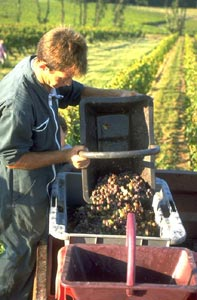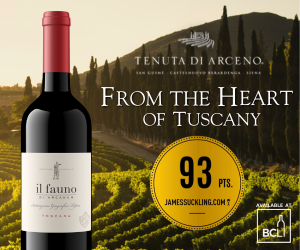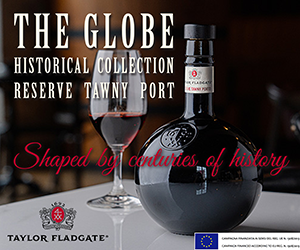The announcement that the French national appellation authority (INAO) will permit winemakers in all 50 Grand Cru terroirs of the region not to indicate the names of varieties on wine labels has stunned many Alsace producers and wine drinkers from around the world.

Here are two background stories by written by Panos Kakaviatos in France the first about the change and the earlier contemplating the change... ag
The French wine authorities have paved the way for a major change to the way Alsace wines are labelled - giving Grand Cru wines the right to exclude the name of the grape from the bottle. The decision has been greeted with anger by some producers, but has been welcomed by others.
The decision from the French national appellation authority (INAO) permits winemakers in all 50 Grand Cru terroirs of the region not to indicate the names of varieties on wine labels.
Alsace wines have been predominantly sold using the names of grapes on their labels, rather than their exact geographical origin, for almost a century, certainly since long before it became fashionable in California or Australia. Bottles are sold as Riesling or Gewurztraminer, with the names of the Grand Cru vineyards generally in smaller letters lower down the label.
In most other parts of France, however, it is unusual to see any mention of a grape variety on a bottle of wine, with the names of appellations like Bordeaux or Chassagne-Montrachet only giving clues about the grapes that have created the wine.
The decision for Alsace seems to be a victory for winemakers like Jean Michel Deiss, who has been lobbying for such a change for years, but disappoints other well-known vintners who think it could create confusion for consumers and belittle Alsace grape varieties.
'What kills terroir today is the délire de la pureté, or the "obsession with purity" concerning wines made from single grapes clearly marked on the label', said Deiss at his domain in Bergheim, before the decision was issued.
Until the decision, the elegant labels of his wines named only after the grand cru vineyards, and without indication of the grapes used, were technically illegal. Deiss oenologist Marie-Hélène Christofaro has welcomed the decision: "It's good news," she said.
However, other winemakers with vineyards in Alsace's Grand Cru plots, which yielded 3.4 million bottles of wine in 2004 (or just four percent of all Alsace wine that year), are unhappy with INAO's decision.
'The first thing people want to know with wines from Alsace is what is in there as a grape, so if we abandon the grapes, it will be the end of Alsace', said Pierre Trimbach, of the famous Maison Trimbach winery in Ribeauvillé.
Laurence Faller, winemaker of the well-known Domaine Weinbach in Kaysersberg, called the decision "abusive" because it puts terroir on a higher pedestal than grape varieties in Alsace.
"Our varietals are adapted to our terroirs and he [Jean Michel Deiss] too often conveys the message that Varietal wines in Alsace are too simple," she said.
Jean-Paul Goulby, director of the Alsace Viticulture Association, said that it is unfair to say that Deiss alone was lobbying for the decision.
'Certainly vintners like Jean Michel Deiss approve of this, but INAO president René Renou wanted the change, to bring Alsace in line with the rest of France', he said.
Alsace Wine Council (CIVA) director Jean Louis Vezien said that Alsace has been caught between grape and terroir, and that granting the option 'accommodates both visions'.
The following article by the same author appeared earlier in an issue of the newsletter FRANCE On Your Own in their column, French Wine Report.
The Riesling Debate: Naming by Grape or Terroir?
by Panos Kakaviatos
Should Alsatian Riesling wine not be called Riesling?
According to Jean Michel Deiss, high-end wines from Alsace should follow the lead of other French wine regions and omit the name of the grape on their label, all in the name of terroir, but other winemakers are crying foul. Enologist Marie-Hélène Christofaro just finished a phone call to a sommelier in a Cote d'Azur restaurant, explaining why the wine she sent from Alsace had no mention of the grape variety.
"It's a matter of education," she said. "People are beginning to learn, and then they appreciate it."
Christofaro works for Marcel Deiss in Bergheim, one of the top wine producers in the northeastern French wine region of Alsace, historically known for wines named after the grape varieties - and not after the places where the grapes are grown. Although wines named after grape varieties, or varietals, are common in what professionals call New World wines -- from places like California, South Africa, Chile and Australia -- most French wine regions, from Bordeaux to the Loire Valley, name their wines after place names, stressing what the French call terroir over the grape, or grapes, used.
"And, it is high time that all of us in Alsace do that too," says Jean Michel Deiss, the forty-something owner of the 27-hectare domaine, always dressed in blue overalls, and always using mystic terminology to defend his technically illegal practice of not putting the name of the grape - be it Riesling, Gewürztraminer or Pinot Gris - on the labels of his Alsatian wines.
Harking back to the religious origins of winemaking in Alsace, Deiss compares each of his vines to ascetic Benedictine monks attempting to reach spiritual heights in just the right plot. But his monkish vines have more than just nature to contend with: the national French wine appellation authority, INAO, has specific rules for high-end wines in Alsace known as grand crus - or wines grown from particularly good locations.
First, only three grape varieties can be grown in grand cru vineyards (Riesling, Pinot Gris and Gewürztraminer), and second, the name of the grape must be on the label of any given grand cru wine.
"What Marcel Deiss is doing is totally illegal," says Pierre Trimbach, winemaker for Maison Trimbach, another highly rated Alsatian winery, who, like many others, oppose Deiss's crusade.
"It's of course a question of style," says brother and manager Jean Trimbach, "but it is impossible to adapt that to Alsace entirely."
"Why oppose the grape variety against the terroir? When I drink an Alsatian wine, I would like to know first and foremost what I am drinking," Jean Trimbach explains. "Even at a restaurant, I would like to know the grape variety so that I could know what to order with it..."
But Deiss insists, and the law has been looking the other way. Go into any wine store, from nearby Strasbourg to Washington DC, and you can buy a Marcel Deiss wine from Alsace, whose colourful label with medieval-like scenes and calligraphy mysteriously leaves out the grapes used to make it.
"We are left alone because we have formally asked the INAO to change its rules, and it's under consideration," Deiss says.
But who are "we"? According to Olivier Humbrecht, a winemaker internationally known for the quality of his Zind-Humbrecht wines, Deiss only has a handful of small vineyard owners who support him.
"I never paid much attention to what he was doing, but now I want people to know: it is ridiculous," Humbrecht asserts.
"The only reason one would want to mix grape varieties is to correct an error," says Humbrecht, who is known to have some of the finest wine plots in all of Alsace, where he grows 100% single varietal wines.
"Alsace is all about the purity of the grape. A Riesling wouldn't be a Riesling if you started adding other varietals in the mix," he explains.
Deiss counters: "What kills terroir today is the délire de la pureté, French for "the obsession with purity." To him, one grape variety is just one syllable.
"How can you write poetry with just one syllable?" Deiss also claims that by co-planting different grape varieties in one plot, they tend to ripen at the same time - an argument Zind-Humbrecht finds crazy.
"I tell you, we tried that many years ago, and when the Riesling is ripe, the others are green, and when the others are ripe, the Riesling is spoiled. We've tried it and it does not work," he countered.
Another respected winery, Albert Mann in Wettolsheim, also disagrees with Deiss.
"We are going to declare co-planting illegal in Hengst [a well-known vineyard in Alsace]," said Albert Mann winemaker Jackie Barthelmé, for the same reasons.
But the fact remains that the most highly rated - and most expensive - Marcel Deiss wines are all grape blends grown from the same plot, such as Schoenenburg or Altenberg de Bergheim, both grand cru vineyards. International wine critic, Robert Parker, gives notes in the mid 90s (out of 100) to both, which are composed mostly of Riesling, but including Gewürztraminer and Pinot Gris, each costing about $60 a bottle.
"In all fairness," admits Humbrecht, "only time will tell how well his wines age."
"So in say, 20 years, if his wines turn out really fabulous, then maybe we will all adapt his methods."
"But I would not bet on that."

 quicksearch
quicksearch





